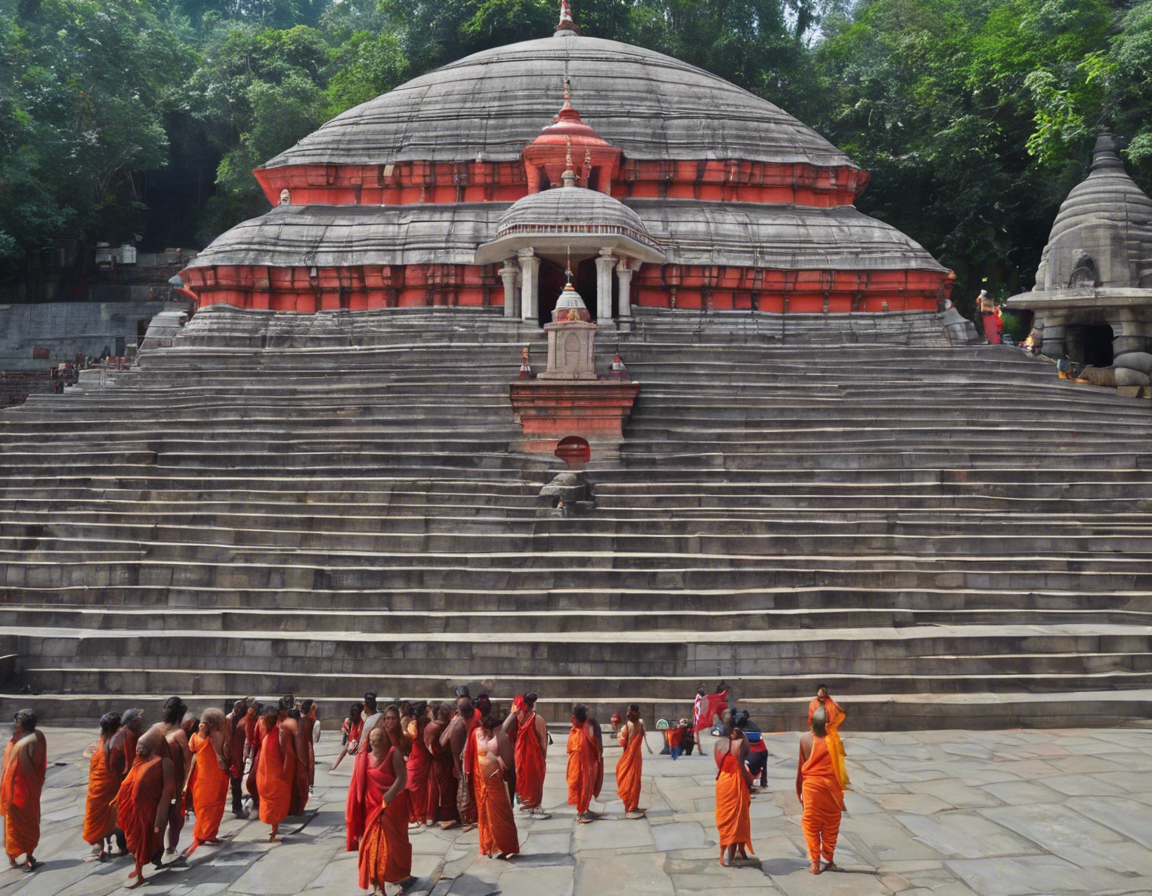Introduction
Nestled on the Nilachal Hill in the western part of Guwahati city in Assam, India, the Kamakhya Temple stands as a mystical sanctuary shrouded in enigma and spiritual allure. Believed to be one of the oldest of the 51 Shakti Pithas, Kamakhya Temple is dedicated to the Hindu goddess Kamakhya, the powerful and fierce form of Shakti. The temple attracts millions of devotees and spiritual seekers annually, seeking blessings, solace, and enlightenment. In this article, we will embark on a spiritual journey to explore the mysteries and significance of the Kamakhya Temple.
The Legend of Kamakhya Temple
According to Hindu mythology, the story of Kamakhya Temple is steeped in ancient lore and legend. The temple is believed to be the place where the yoni (vulva) of the goddess Sati, the first wife of Lord Shiva, fell after her self-immolation in the sacrificial fire of her father Daksha’s yagna. The temple is thus considered a symbol of the feminine divine energy and fertility.
Architecture and Sacred Spaces
The architecture of Kamakhya Temple is a unique blend of Assamese and Bengali styles, with a distinctive beehive-shaped dome. The temple complex consists of several smaller shrines dedicated to various forms of the goddess, as well as a natural underground spring that is revered as the main source of the temple’s sanctity. The main sanctum sanctorum, known as the Garbhagriha, houses the yoni-shaped rock that symbolizes the presence of the goddess Kamakhya.
Spiritual Practices and Rituals
Devotees and seekers visiting Kamakhya Temple partake in various spiritual practices and rituals to seek blessings and divine intervention. The most significant ritual associated with the temple is the Ambubachi Mela, a four-day fertility festival held annually during the monsoon season. During this time, it is believed that the goddess Kamakhya undergoes her annual menstrual cycle, and the temple remains closed to devotees.
Significance and Symbolism
The Kamakhya Temple holds profound significance in Hindu mythology and spirituality. It is considered a powerful center of Shakti worship, where devotees seek blessings for fertility, protection, and liberation from worldly troubles. The temple’s association with the divine feminine energy signifies the cyclical nature of creation, preservation, and destruction, as embodied by the goddess Kamakhya.
Visiting Kamakhya Temple: A Pilgrim’s Guide
For pilgrims and spiritual seekers planning to visit Kamakhya Temple, here are some essential tips and guidelines to enhance your experience:
-
Dress Code: Visitors are required to adhere to a modest dress code while entering the temple premises. It is advisable to wear traditional Indian attire and avoid revealing clothing.
-
Timing: The temple timings vary during different seasons and festivals. It is recommended to check the schedule in advance and plan your visit accordingly.
-
Footwear: Shoes are not allowed inside the temple complex. There are designated areas for shoe storage where visitors can keep their footwear before entering the temple.
-
Photography: While photography is allowed in certain areas of the temple, it is important to respect the sanctity of the religious site and refrain from taking pictures in restricted zones.
-
Prasad: It is customary to offer prasad (religious offering) to the goddess when visiting the temple. Devotees can purchase prasad items from the stalls outside the temple.
FAQs (Frequently Asked Questions)
-
What is the best time to visit Kamakhya Temple?
The ideal time to visit Kamakhya Temple is during the winter months from October to March when the weather is pleasant. -
Is there a specific dress code for visiting the temple?
Yes, visitors are required to dress modestly and adhere to a traditional dress code while entering the temple premises. -
Are there any accommodation options near Kamakhya Temple?
There are several budget hotels and guesthouses available near the temple where visitors can stay during their pilgrimage. -
What are the main festivals celebrated at Kamakhya Temple?
The Ambubachi Mela, Durga Puja, and Navratri are some of the major festivals celebrated with grandeur at Kamakhya Temple. -
Is photography allowed inside the temple complex?
Photography is permitted in certain areas of the temple, but it is advisable to ask for permission before taking pictures. -
Can non-Hindus visit Kamakhya Temple?
Yes, people of all faiths and backgrounds are welcome to visit Kamakhya Temple and seek blessings from the goddess. -
Are there any specific spiritual practices or rituals performed at the temple?
Devotees can participate in rituals like offering flowers, lighting incense, and chanting mantras to seek the blessings of the goddess. -
How can I reach Kamakhya Temple?
The temple is easily accessible by road, rail, and air. The nearest airport is Lokpriya Gopinath Bordoloi International Airport in Guwahati. -
What is the significance of the natural spring within the temple complex?
The natural spring, known as the Devi’s Well, is considered to be a sacred source of water with healing properties, linked to the goddess’s divine energy. -
Can women visit the temple during their menstrual cycle?
It is believed that women are barred from entering the temple during the Ambubachi Mela, as it coincides with the goddess’s annual menstrual cycle.
In conclusion, a visit to Kamakhya Temple is not just a pilgrimage but a transformative spiritual journey that delves into the mysteries of the divine feminine and the primal energy of creation. It is a place where the devout seek solace, blessings, and enlightenment, connecting with the eternal cycle of birth and rebirth that defines the human experience. Plan your visit to Kamakhya Temple with reverence and an open heart, ready to embrace the profound spiritual energies that dwell within its ancient walls.
